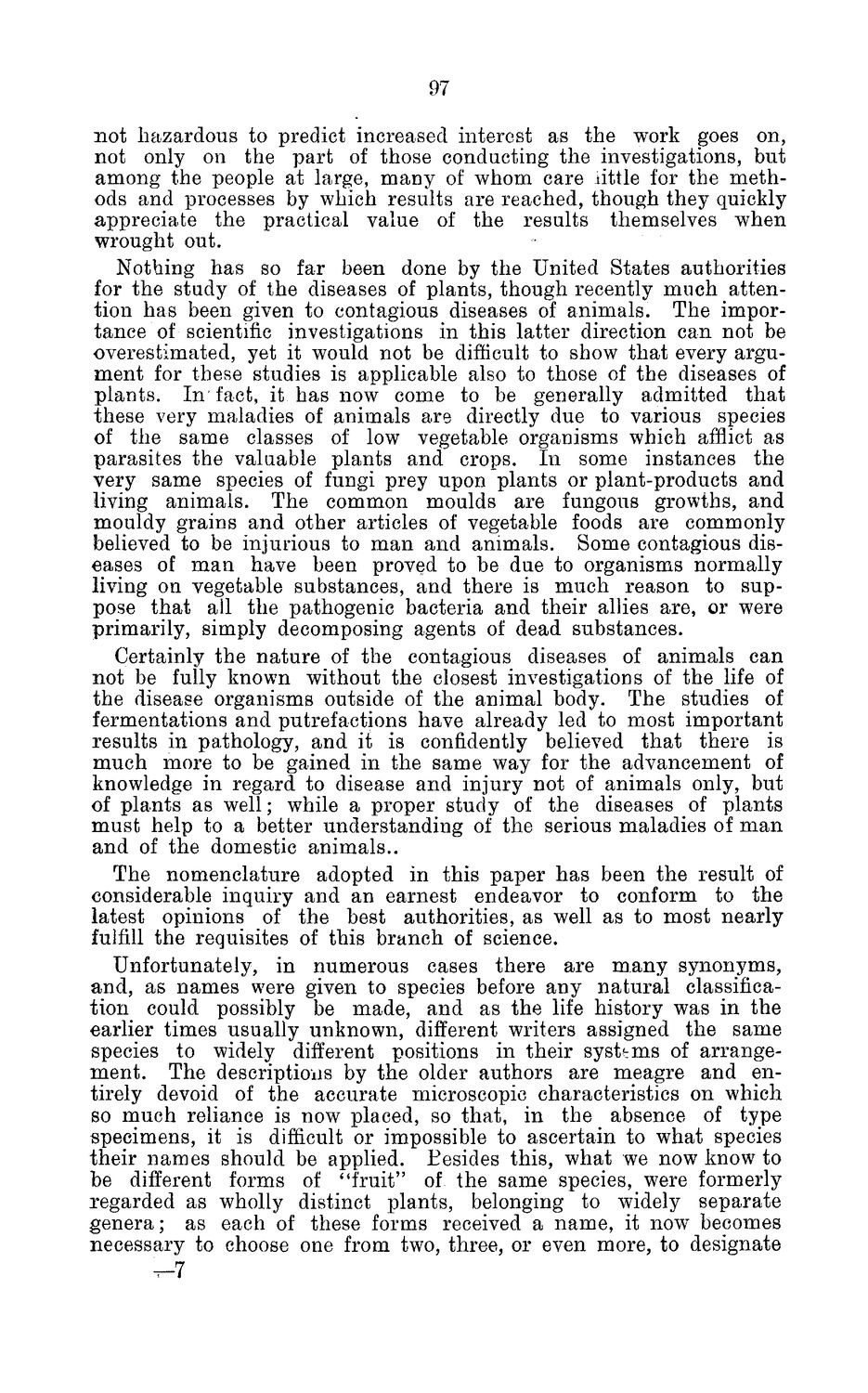| |
| |
Caption: Board of Trustees Minutes - 1884
This is a reduced-resolution page image for fast online browsing.

EXTRACTED TEXT FROM PAGE:
97 not hazardous to predict increased interest as the work goes on, not only on the part of those conducting the investigations, but among the people at large, many of whom care little for the methods and processes by which results are reached, though they quickly appreciate the practical value of the results themselves when wrought out. Nothing has so far been done by the United States authorities for the study of the diseases of plants, though recently much attention has been given to contagious diseases of animals. The importance of scientific investigations in this latter direction can not be overestimated, yet it would not be difficult to show that every argument for these studies is applicable also to those of the diseases of plants. In fact, it has now come to be generally admitted that these very maladies of animals are directly due to various species of the same classes of low vegetable organisms which afflict as parasites the valuable plants and crops. In some instances the very same species of fungi prey upon plants or plant-products and living animals. The common moulds are fungous growths, and mouldy grains and other articles of vegetable foods are commonly believed to be injurious to man and animals. Some contagious diseases of man have been proved to be due to organisms normally living on vegetable substances, and there is much reason to suppose that all the pathogenic bacteria and their allies are, or were primarily, simply decomposing agents of dead substances. Certainly the nature of the contagious diseases of animals can not be fully known without the closest investigations of the life of the disease organisms outside of the animal body. The studies of fermentations and putrefactions have already led to most important results in pathology, and it is confidently believed that there is much more to be gained in the same way for the advancement of knowledge in regard to disease and injury not of animals only, but of plants as well; while a proper study of the diseases of plants must help to a better understanding of the serious maladies of man and of the domestic animals.. The nomenclature adopted in this paper has been the result of considerable inquiry and an earnest endeavor to conform to the latest opinions of the best authorities, as well as to most nearly fulfill the requisites of this branch of science. Unfortunately, in numerous cases there are many synonyms, and, as names were given to species before any natural classification could possibly be made, and as the life history was in the earlier times usually unknown, different writers assigned the same species to widely different positions in their systems of arrangement. The descriptions by the older authors are meagre and entirely devoid of the accurate microscopic characteristics on which so much reliance is now placed, so that, in the absence of type specimens, it is difficult or impossible to ascertain to what species their names should be applied. Eesides this, what we now know to be different forms of "fruit" of the same species, were formerly regarded as wholly distinct plants, belonging to widely separate genera; as each of these forms received a name, it now becomes necessary to choose one from two, three, or even more, to designate
| |